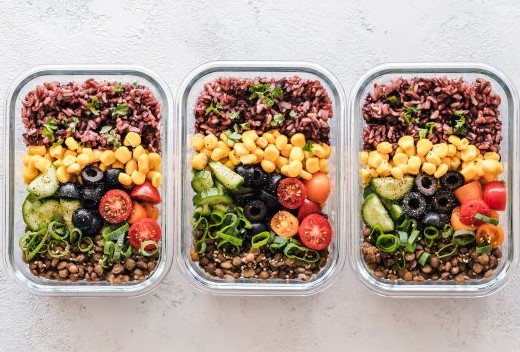For the last decade, calorie and macro counting have been the go-to weight loss strategy. Counting calories and getting more specific with macronutrient targets can be a really effective fat loss strategy and a great way to manage your nutrition for many other goals. This is because in order to lose weight, you need to be in a calorie deficit. That means you need to be burning more calories through exercise and daily activity than you’re eating. And what better way to make sure you’re in a calorie deficit than counting calories?
Counting calories might be the most accurate way to make sure you’re in a calorie deficit, but you don’t need to count your calories to be in a deficit. Many people enjoy the simplicity and structure of counting calories and tracking their food. For others, calorie counting can cause anxiety, stress, and just isn’t sustainable in the long run. Calorie counting can also be challenging if you find yourself eating out or traveling frequently, or if you’re not the one cooking all of your meals.
The good news is that there are other options! If you find that counting and tracking your calories or macros isn’t working for you, here are a few other strategies:
Incorporate Healthy Habits
This is a good place to start, and you can build in the remaining strategies from here! Instead of focusing on the specific calories or foods you’re eating, try focusing on adding in a few foundational habits.
Start by focusing on slow and mindful eating. Put away your phone and other distractions as you eat, set a timer and aim to take longer to eat your meal, and notice how you feel before, during, and after your meal.
From there, focus on eating your vegetables and protein before moving onto carbohydrate and fat sources. It’s harder to overeat when you’re filling up on protein and vegetables first.
You can also drink water before each of your meals, go for a ten minute walk after each meal, and set consistent meal times. The habits you choose to focus on are up to you! Think about what changes you would benefit from the most.
3 Plates & 2 Snacks
I love this approach for keeping portions under control without requiring any tracking! I first learned of this approach from Jordan Syatt. This approach is as simple as it sounds. You eat 3 meals per day, and everything you eat during that meal should be on one plate.
Ideally, the plate is ½ veggies, ¼ protein, and the rest is made up of a combination of carbohydrates and fats. However, even starting off by just limiting yourself to one plate of food per meal can make a massive difference. Your two snacks should be either a protein snack, like jerky or yogurt, or a fruit. The snack should fit into one palm.
This approach makes it easy to keep everything under control when eating meals out or at family gatherings. You can see all of your food on one plate and there’s no going back to “pick.”
At the same time, this method doesn’t require you to give up any of your favorite foods. You can still eat the slice of cake, it just needs to fit on your plate!
It is worth noting that depending on your size and activity level, you might need to play around with the portions. For some folks, 3 plates/3 snacks or 2 plates/2 snacks might work best.
Hand Portion Goals
Using hand portions is a great way to manage your food intake without calories! Standard hand portions are as follows:
- A serving of protein is the palm of your hand.
- A serving of vegetables is one fist.
- A serving of carbs is one cupped hand.
- A serving of fats is one thumb.
The number of portions you will need per day and per meal will vary based on your size and goals, but for most people a good starting point is 1-2 palms of protein-dense foods per meal, 1-2 fists of vegetables at each meal, 1-2 cupped handfuls of carbohydrates at most meals, and 1-2 thumbs of fat-dense foods at most meals. Depending on your goals and size, you can experiment with these numbers and slowly increase/decrease your portions based on the progress you are making.
This method is great because you always have your hands with you as a reference guide, and you don’t have to get too bogged down with tracking specific calorie or macro numbers.
Ready to take the next step?
I am launching my NEW Forever Fit Foundations course soon to help you nail down the basics of fitness & nutrition! This online coaching course is specifically geared towards beginners and will teach you how to safely and effectively perform basic strength training exercises, learn nutrition fundamentals, and feel confident in the gym. Fill out my coaching application to set up a complimentary call and learn more!
